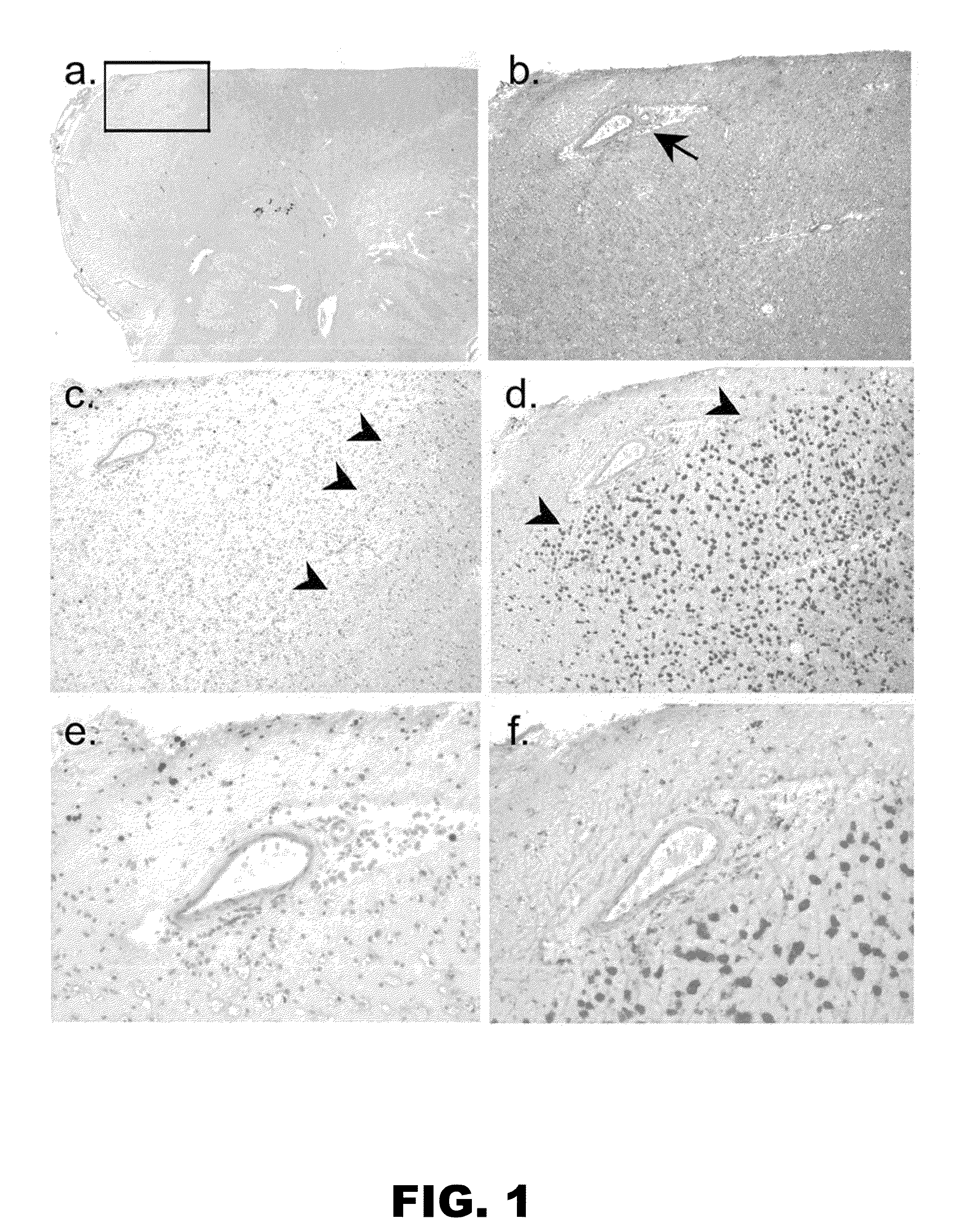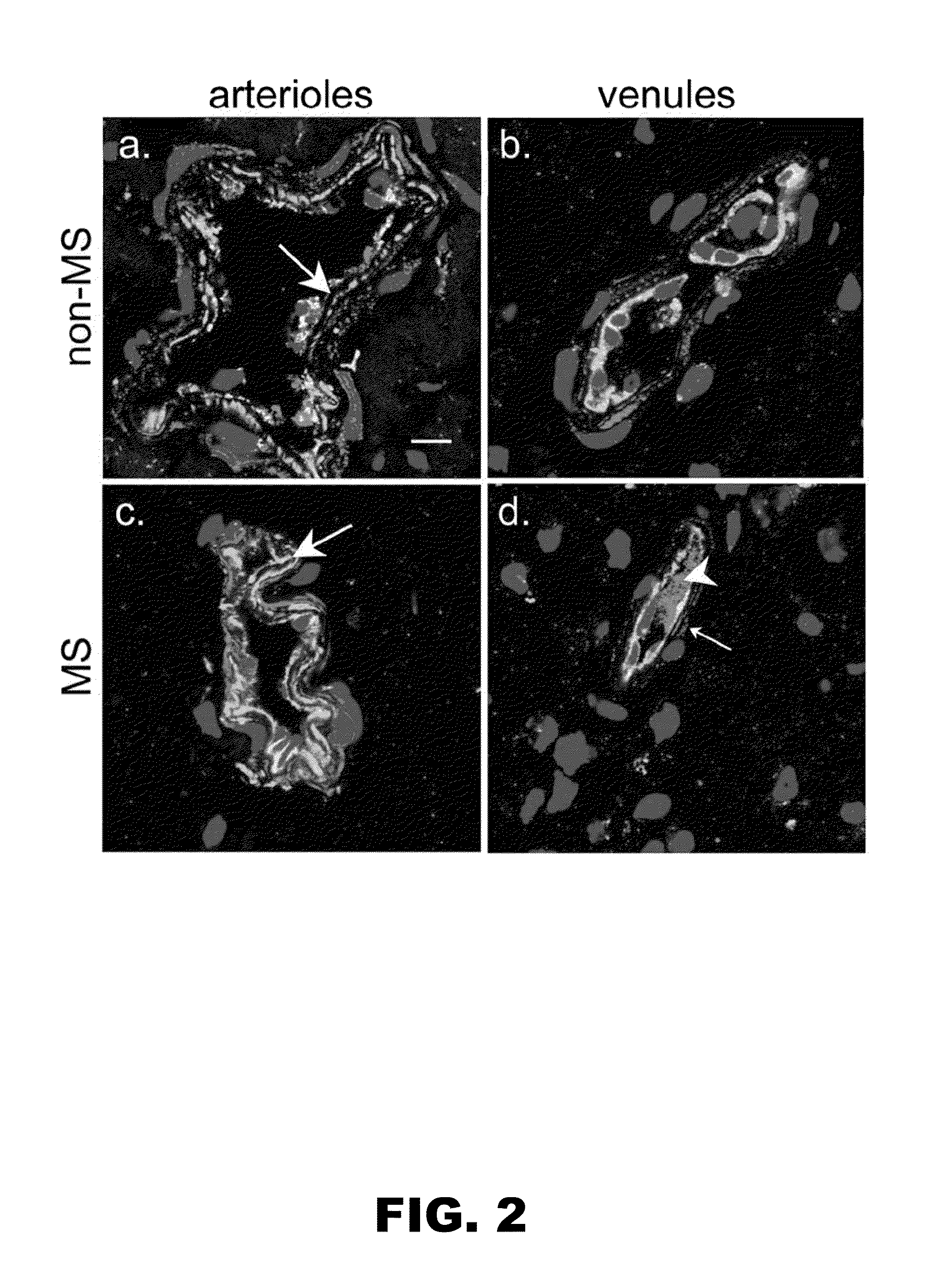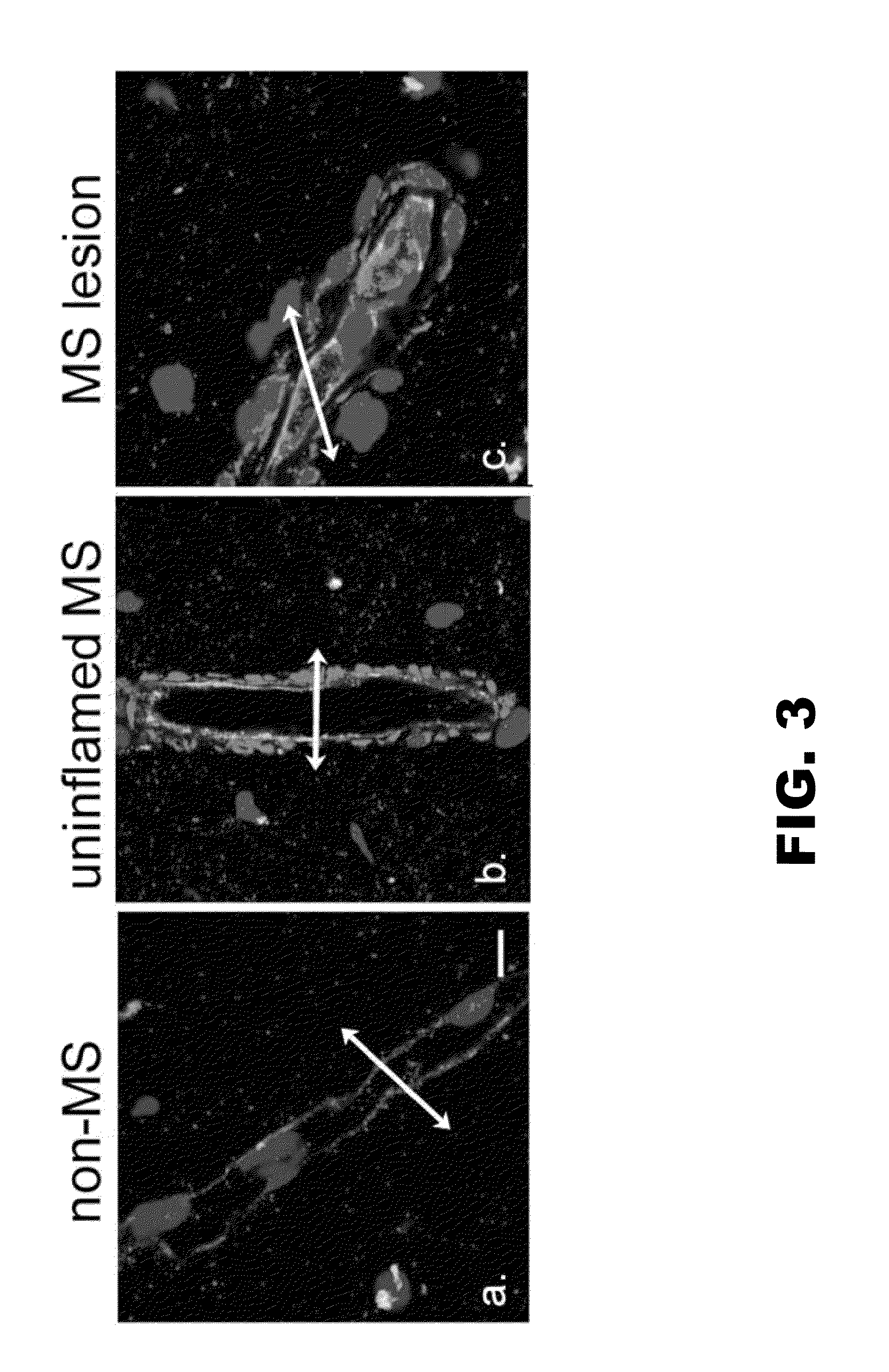Method for detecting inflammatory disorders of the central nervous system
a central nervous system and inflammatory disease technology, applied in the direction of biological material analysis, material analysis, instruments, etc., can solve the problem that ms can be difficult to diagnos
- Summary
- Abstract
- Description
- Claims
- Application Information
AI Technical Summary
Benefits of technology
Problems solved by technology
Method used
Image
Examples
examples
[0048]The following examples illustrate various iterations of the invention.
examples 1-5
Pathologic Expression of CXCL12 at the Blood-Brain Barrier Correlates with the Severity of Multiple Sclerosis
Background
[0049]The blood-brain barrier (BBB), a specialization of capillary endothelial cells and periendothelial accessory structures, greatly restricts the movement of molecules and cells into the central nervous system (CNS), establishing immune privilege. Leukocytes that traverse the microvasculature during neuroinflammatory diseases such as multiple sclerosis (MS) have been observed to congregate within a subendothelial space between the endothelial cell basement membrane and the glial limitans prior to entering the CNS parenchyma. Thus, one of the hallmark features of MS lesions includes an intense perivascular infiltration consisting of lymphocytes and macrophages.
[0050]Dysregulation of BBB function and transendothelial migration of leukocytes are essential for the development and propagation of active lesions in multiple sclerosis (MS). Evidence from animal studies i...
example 1
Multiple Sclerosis Cohort
[0058]Tissue from eighteen subjects (eleven with MS and seven without MS) were included in the study (Table I). For the MS patients, median disease duration was 19.5 years (range 10 to 35 years). The MS cohort included one patient with RRMS, seven patients with SPMS, and three patients with PPMS.
[0059]Histological characterization of the a total of seventeen MS and twelve non-MS tissue blocks revealed that the majority of MS blocks contained active lesions and these were graded for inflammation, demyelination and infiltration by lipid-laden macrophages as described above (see Table I). In contrast, the blocks from non-MS patients did not show any pathological abnormalities, except in the case of CNS lymphoma, where there were extensive areas infiltrated with neoplastic cells and ORO+lipid-laden macrophages and the case of West Nile virus (WNV) encephalitis, where there were intense perivascular infiltrates.
[0060]Blocks from MS patients also contained areas w...
PUM
 Login to View More
Login to View More Abstract
Description
Claims
Application Information
 Login to View More
Login to View More - R&D
- Intellectual Property
- Life Sciences
- Materials
- Tech Scout
- Unparalleled Data Quality
- Higher Quality Content
- 60% Fewer Hallucinations
Browse by: Latest US Patents, China's latest patents, Technical Efficacy Thesaurus, Application Domain, Technology Topic, Popular Technical Reports.
© 2025 PatSnap. All rights reserved.Legal|Privacy policy|Modern Slavery Act Transparency Statement|Sitemap|About US| Contact US: help@patsnap.com



